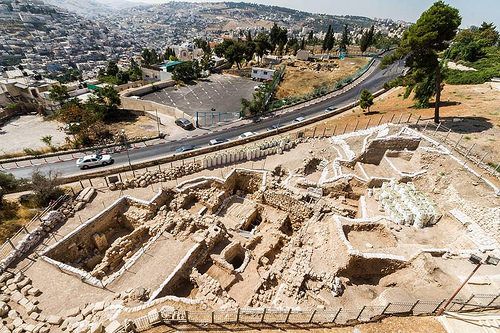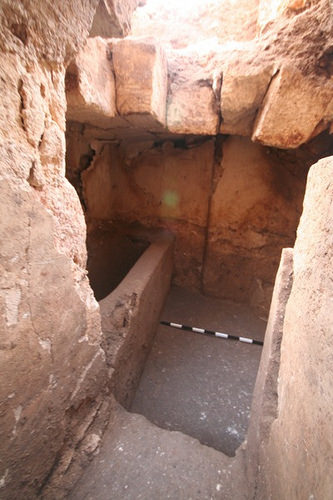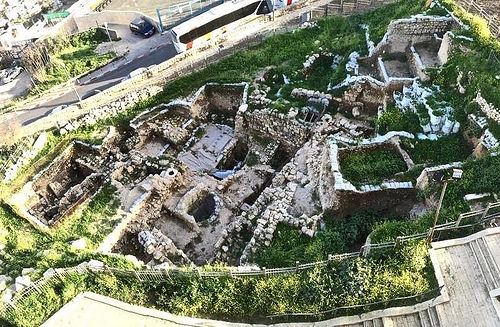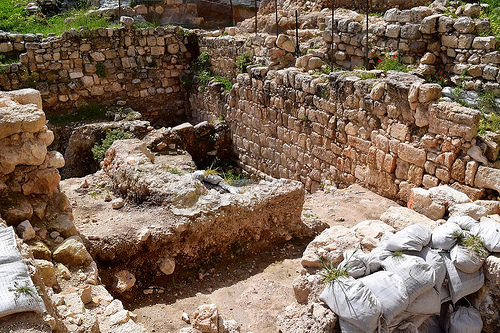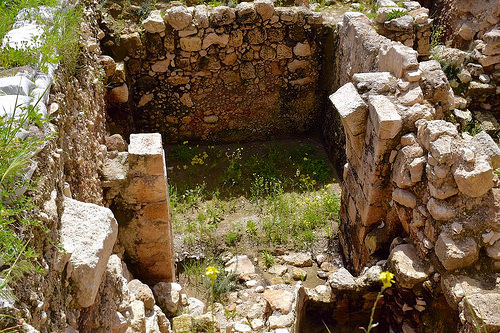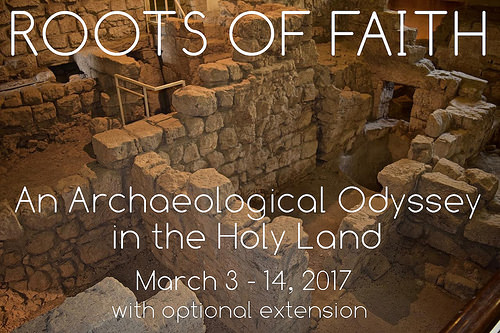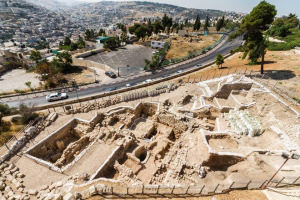
Just below the walls of the Old City of Jerusalem, a team of archaeologists, scholars and students will soon be busy at work excavating one of Jerusalem’s most important archaeological sites — one that features the 2,000-year-old remains of a wealthy residential area that saw its heyday during the time of Herod and Jesus.
Directing the operation is Shimon Gibson, a British-born Israeli archaeologist and adjunct professor at the University of North Carolina at Charlotte. He is also a Senior Associate Fellow at the W. F. Albright Institute of Archaeological Research. He, along with co-director James Tabor, a well-known scholar of Second Temple period Judaism and early Christianity and Professor with the Department of Religious Studies at the University of North Carolina at Charlotte, is excavating an area adjacent to and below the southern Old City wall of Jerusalem. Referred to as the Mount Zion excavation because of its location in the sacred elevated area at the center of ancient Jerusalem near the historical Temple Mount, the work here is important because it is unearthing evidence of people who played out history in this place for thousands of years. It is set near a number of significant places in the history of this ancient city, such as the Praetorium where Jesus was tried before Pontius Pilate; the presumed location of the Last Supper of Jesus; the House of Caiaphas and those of other priestly families who lived during the time of Jesus; the large Nea Ekklesia of the Theotokos Church that Emperor Justinian commissioned in the 6th century and that was situated just above the site; and fortifications of the Crusaders and the Ayyubids.
_________________________________________
Aerial overview of the Mount Zion dig site. Courtesy Mount Zion Archaeological Project
_____________________________________________________
The team has completed its 2015 season of excavations, building on the large collection of finds and records they have already amassed from previous seasons—findings that are helping them to gradually piece together what life was like for the people who lived here centuries before in the shadow of Jerusalem’s ancient walls.
“We’re uncovering ancient Jerusalem in all of its periods,” says Tabor in a news documentary about the dig. “This is actually the center of the city” he says about the location of the dig. That’s because the historic 15th-16th century Old City wall that overlooks the site did not exist for most of the time periods represented by the finds his team are uncovering. “So you have to imagine markets and houses and streets, and those are not visible now. It’s like a city arising out of the soil.”*
Says Gibson: “The early remains that we thought were badly preserved turned out to be extremely well preserved, with houses, palatial houses dating back 2,000 years, with the ceilings of the lower basement levels intact, vaulted ceilings, and doorways leading into different chambers.”*
Some of the finds made in previous seasons include a plastered cistern, a stepped and plastered ritual bathing pool (‘mikveh’) with a well preserved barrel-vaulted ceiling, a chamber containing three bread ovens (‘tabuns’), Early Roman pottery, lamps, stone vessels, murex shells, coins, Roman Tenth Legion stamped roof tiles, and what appeared to be a relatively rare and well-preserved, plastered bathtub. Gibson and Tabor suggest that what they are finding could be a wealthy neighborhood and, given the site’s proximity to the location of the Herodian-built Second Temple known from the time of Jesus, possibly a community that included priests who served at the Temple.
_______________________________________
Above, a remarkably well preserved ‘bathtub’ uncovered within the excavated home of a wealthy resident of ancient Jerusalem. Photo by Lori Woodall
_________________________________________________
Gibson hopes that, beyond the scientific and scholarly gain that will be generated by the excavations and research, the work here will set the stage for an archaeological park open to the public. “With time,” he adds, “when we have completed the excavation work, we will be getting down to preserving the archaeological remains and then opening it up as a park so that one day these people that are now passing by in bewilderment looking at our tents and seeing all this fuss being made in these excavation trenches will be able to come down and pass through and see all of these amazing remains in a way which together combine into a kind of theatre of history.”*
_____________________________________
Above and below: The Mount Zion dig site as it looks today, before excavators return to the site in the summer of 2016. Above photo by Victoria Brogdon
__________________________________________________
______________________________________________________
“This season promises to be spectacular as we come down on the well preserved 2nd Temple period remains,” says Tabor.
The dig directors now look forward to the next excavation season, only one month away with a record number of participants. However, funding is still needed for general operational costs.
“Each year we have the challenge of raising $80,000 in operational funds,” says Tabor. “UNC Charlote covers faculty and staff costs, and our diggers pay a modest fee, but the actual expenses of the dig we have to obtain through fundraising.”
Tabor and colleagues are calling for help from the general public — those who may be interested in “adopting” the site as their own and making a generous donation to help the researchers make more important discoveries for the next season. You can make a tax deductible donation either by check or on-line, to UNC Charlotte—see How to Support the Dig.
More information about the Mount Zion dig can be found at https://digmountzion.uncc.edu/ , https://popular-archaeology.com/issue/summer-2015/article/jerusalem-dig-hits-pay-dirt , and https://popular-archaeology.com/issue/12012013/article/digging-into-first-century-jerusalem-s-rich-and-famous.
________________________________________
*News video documentary: UNC Charlotte in Jerusalem/NC Now/UNC-TV
________________________________________
Travel with Popular Archaeology and personally see some of the most exciting archaeological discoveries underpinning the historical basis for the places and events of the biblical accounts!
____________________________________

______________________________________________
Travel and learn with Far Horizons.
____________________________________________
This richly illustrated issue includes the following stories: Recent findings shedding new light on the whereabouts of the remains of Philip of Macedon, father of Alexander the Great; how an archaeologist-sculptor is bringing bones of the dead back to life; archaeologists uncovering town life at the dawn of civilization; an exclusive interview with internationally acclaimed archaeologist James M. Adovasio about what makes the Meadowcroft Rockshelter prominent in the ongoing search for the first Americans; what archaeologists are finding at the site of the ancient city of Gath, the home town of the biblical Philistine giant, Goliath; and how scientists are redrawing the picture of human evolution in Europe. Find it on Amazon.com.

